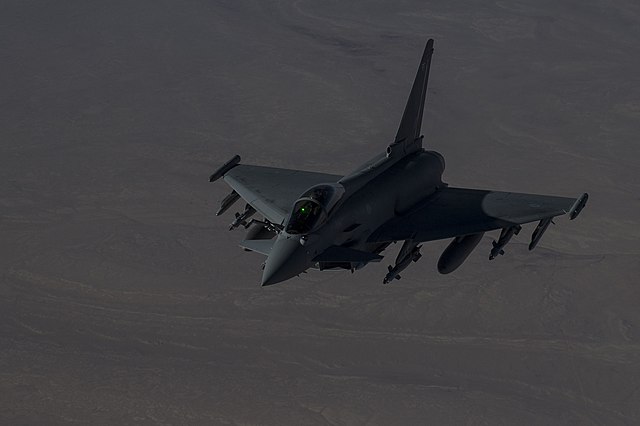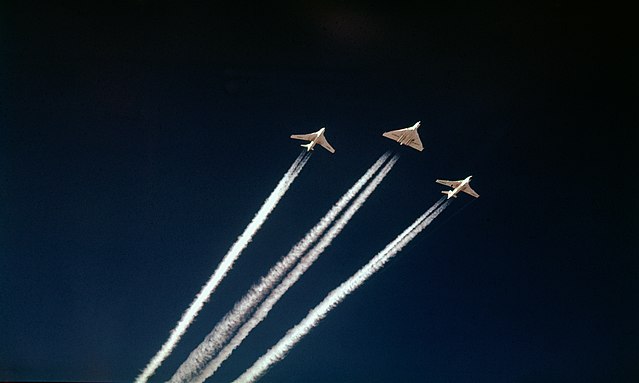Operation Shader is the operational code name given to the contribution of the United Kingdom in the ongoing military intervention against the Islamic State of Iraq and the Levant. The operation involves the British Army providing ground support and training to allied forces fighting against ISIL, the Royal Air Force providing humanitarian aid airdrops, reconnaissance and airstrikes, and the Royal Navy providing reconnaissance and airstrikes from the UK Carrier Strike group and escort to allied carrier battle groups.
A Typhoon FGR4 flies over Iraq on 22 December 2015.
Two Royal Air Force (RAF) C-130J Hercules aircraft in Iraq, after being unloaded of vital humanitarian supplies on 9 September 2014.
A Tornado GR4 returns to RAF Akrotiri after the first airstrikes on 30 September 2014.
A Tornado GR4 destroys an ISIL armoured vehicle in Al Qaim on 2 November 2014.
The Royal Air Force (RAF) is the air and space force of the United Kingdom, British Overseas Territories and Crown Dependencies. It was formed towards the end of the First World War on 1 April 1918, becoming the first independent air force in the world, by merging the Royal Flying Corps (RFC) and the Royal Naval Air Service (RNAS). Following the Allied victory over the Central Powers in 1918, the RAF emerged as the largest air force in the world at the time. Since its formation, the RAF has played a significant role in British military history. In particular, during the Second World War, the RAF established air superiority over Hermann Göring's Luftwaffe during the Battle of Britain, and led the Allied strategic bombing effort.
A Spitfire and Hurricane, which both played major roles in the Battle of Britain.
The Avro Lancaster heavy bomber was extensively used during the strategic bombing of Germany.
The RAF V bomber force was used to carry both conventional and nuclear bombs.
The Tornado played an integral part in RAF operations from 1991 until its retirement in 2019








